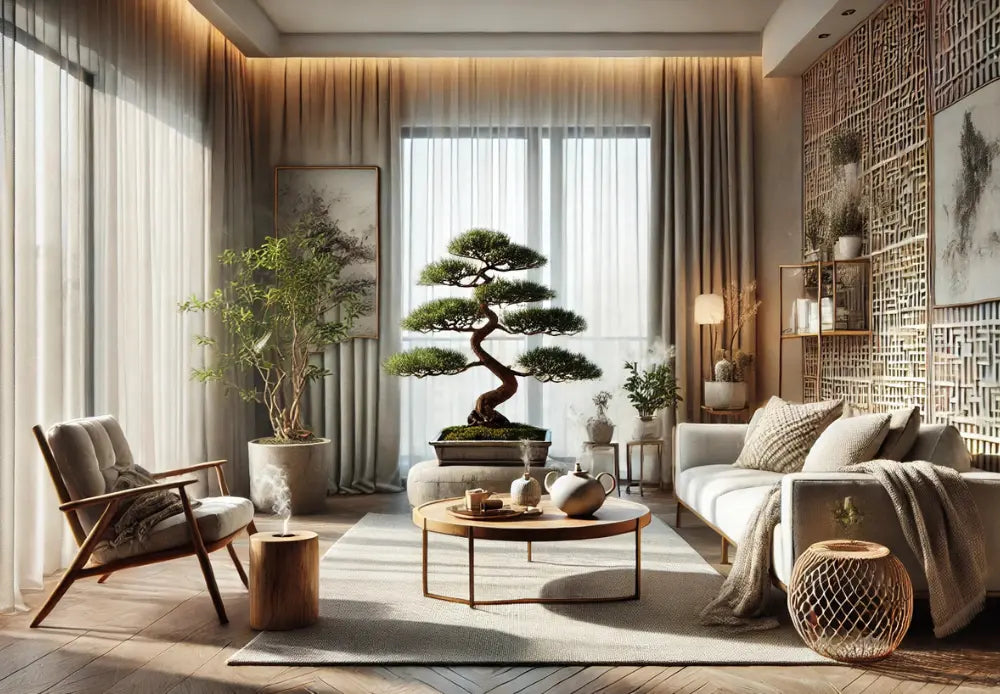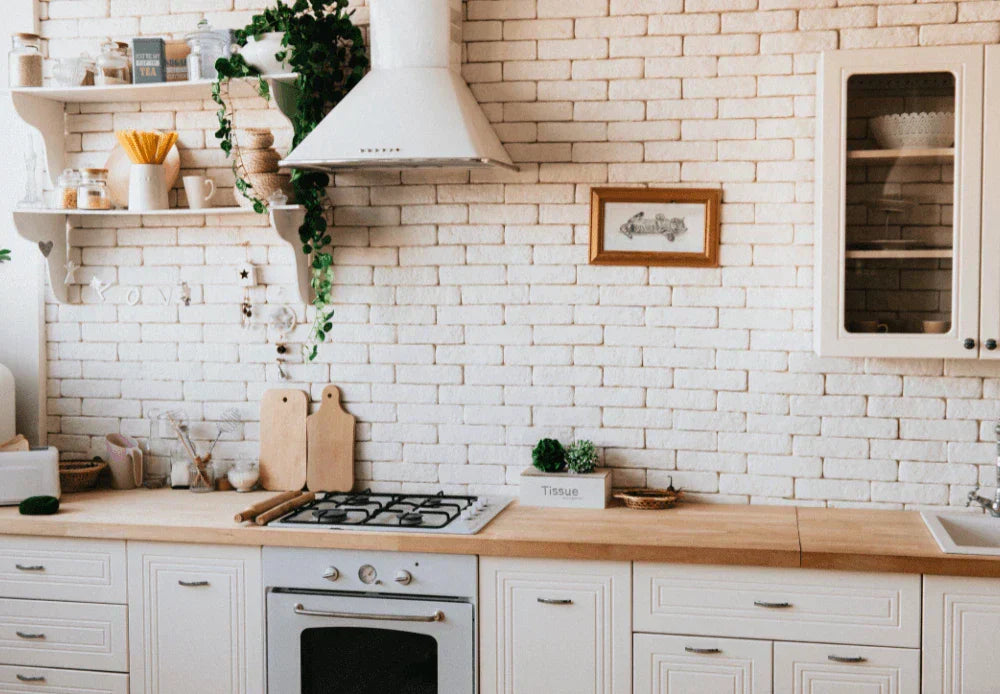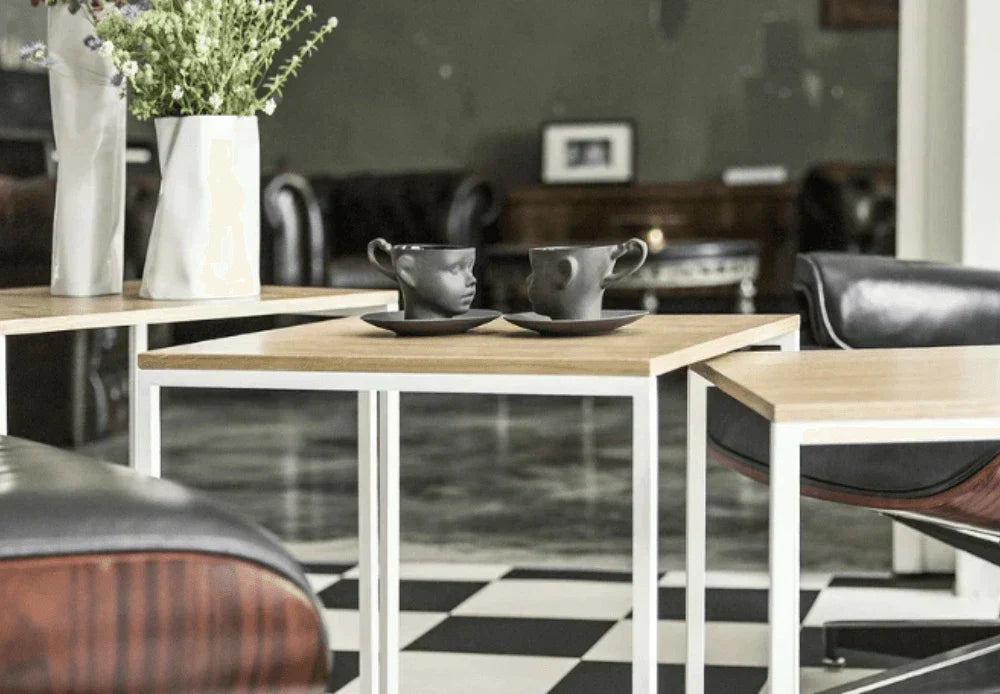Have you ever wondered why some spaces make you feel comfortable and energized, while others feel overwhelming? The key lies in the right balance of the environment, which can influence our well-being, relationships, and daily functioning.
The art of harmonious interior design is based on the principles of free energy flow. A key concept in this philosophy is Chi – the life force present in people, nature, and space. When it flows without obstacles, it promotes balance and a good mood.
Equally important is the principle of feng shui arrangement, also known as the principle of the five elements, which affect the atmosphere in a given space:
Earth – stability and security, Fire – motivation and expression, Water – calmness and intuition, Metal – clarity and concentration, Wood – growth and creativity.
Table of Contents:
Basic Principles of Feng Shui
Every environment influences our lives—both physically and emotionally. The art of space arrangement, rooted in centuries-old tradition, aims to create a harmonious setting where energy flows freely, supporting the well-being of its inhabitants.
The Balance of Yin and Yang – The Key to Harmony
The fundamental principle of this philosophy is the balance of opposing forces – Yin and Yang. Yin symbolizes calmness, softness, and relaxation, while Yang represents dynamism, movement, and activity. An excess of either energy can lead to restlessness or stagnation, so it is essential to maintain the right proportions in every space.
In the bedroom, Yin should dominate—soft fabrics, muted colors, and subtle lighting encourage rest.
In the office or living room, incorporating more Yang is beneficial—bright, well-lit spaces with dynamic accents stimulate creativity and activity.
wooden coffee table for the living room
Key Principles of Space Organization
Proper interior arrangement is based on several universal principles:
Free flow of energy – avoid cluttered spaces and arrange furniture in a way that does not block natural movement.
Order and minimalism – clutter disrupts energy flow and can cause feelings of fatigue.
Natural materials and light – wood, stone, and water strengthen the connection with nature, while good lighting improves well-being.
These fundamental rules form the basis of a harmoniously organized interior. In the next section, we will explore how to apply them to different rooms to ensure each area of the home supports health, peace, and positive energy.
Feng Shui in Different Rooms
Each room in a home serves a specific function and needs to be adapted to the natural rhythm of energy. Feng shui arrangement principles help create a space that promotes balance, health, and prosperity.
Bedroom – Balance and Regeneration
The bedroom is one of the most important places in the home, as it is where the body regenerates and rests after a long day. Feng shui principles in the bedroom focus on maintaining a balance between tranquility and energetic protection.
Colors should be soft and warm, such as beiges, pastel blues, or light greens, as they encourage relaxation.
Another important aspect is bed placement – the best position is with the headboard against a wall, allowing the sleeper to see the door without being directly in line with it.
Mirrors in the bedroom require careful placement – improper positioning can cause excessive energy stimulation and disrupt sleep.

wooden bedside table for the bedroom
Living Room – Balance Between Activity and Relaxation
The living room is the center of family life and social gatherings, so it should encourage both interaction and relaxation.
Feng shui principles for the living room suggest arranging furniture to allow for a smooth energy flow – the sofa should be placed against a wall to create a stable and inviting space, while lighting should be varied, combining natural light with warm lamps of different intensities.
Including nature-related elements such as wood, plants, and soft fabrics in the decor helps to maintain balance.
Kitchen – Health and Prosperity
The kitchen’s energy directly affects the health of the household, so its organization should support the harmonious flow of life forces.
Feng shui in the kitchen combines the elements of Fire and Water, so it is important to avoid placing them next to each other – the sink and stove should not be adjacent.
Color choices also matter – earth tones such as beige, brown, and yellow provide stability and a sense of security.
Keeping the kitchen tidy is also essential, as excessive clutter can block the flow of Chi.
Bathroom and Hallway – Controlling Energy
The bathroom is a space where energy often escapes from the home, so preventive measures are necessary. Feng shui principles for the bathroom suggest keeping the door closed and the toilet lid down to help maintain a smooth energy flow.
The hallway serves as a gateway through which energy enters the home. Feng shui principles for the hallway emphasize the importance of a bright, well-lit entrance and minimizing clutter, which can block the flow of positive vibrations.
Mirrors in this part of the home can enhance energy but should be positioned so they do not reflect the entrance door, which could cause energy to escape.
Office – Efficiency and Focus
A workspace should promote concentration and creativity. Feng shui principles for an office highlight the importance of proper desk placement – ideally, it should be in the so-called "power position," facing the door but not directly in line with it.
Wall colors such as green and blue support focus and relaxation. It is also beneficial to include potted plants, which help purify the air and enhance the quality of Chi energy in the room.

Children’s Room – Balance Between Calmness and Dynamism
A child’s space should support both development and rest. Children's feng shui suggests that the bed should not be placed directly under a window or in line with the door, as this could disrupt sleep.
Soft, pastel colors are recommended to encourage relaxation, while dynamic accents can stimulate creativity.
Lighting should be well-balanced to provide suitable conditions for both studying and resting.
Garden – Natural Balance
The space around the home influences inner harmony, so a Feng Shui Garden should be designed to balance all elements of nature.
It is important to incorporate the five feng shui elements in harmony – stone representing Earth, water in the form of a pond or fountain, wood as vegetation, light symbolizing Fire, and metal decorative elements.
Pathways should be gently curved to promote natural energy flow. Sharp, angular plants can disrupt balance, so it is best to choose species with soft, rounded leaves.
Practical Feng Shui Techniques
Applying feng shui principles requires not only proper interior planning but also skillful selection of decorations, colors, and elements that support the free flow of energy.
Regardless of whether you are just beginning your journey with this art of arrangement or looking to refine your space, it is best to introduce changes gradually, step by step, to adapt the environment to your needs.
How to Implement Changes Step by Step?
Implementing feng shui principles should start with analyzing the current state of your interior. Feng shui techniques rely on simple but effective actions that improve the flow of Chi and help create a harmonious space.
How to Implement Changes Step by Step?
The first step is to organize the surroundings. Excess items, unnecessary decorations, and cluttered corners can block energy, leading to stagnation and a feeling of overwhelm. Order is the foundation of balance – it is worth regularly decluttering and ensuring a well-organized space.
The next element is proper furniture arrangement. Feng shui interior design suggests that key elements such as the bed, desk, or sofa should be positioned in the so-called power position, meaning that the person sitting or lying down should be able to see the entrance to the room but not be directly in its line.
The Role of Decorations, Colors, Mirrors, and Plants
Properly selected feng shui decorations have a huge impact on the atmosphere of the interior. Every element, from wall colors to accessories, should support harmony and meet the specific needs of the inhabitants.
Feng shui colors play a crucial role in space arrangement. Each color is associated with one of the five elements and affects the energy of the room. Soft pastels and beiges promote relaxation, while intense shades of red or orange stimulate activity and creativity.
Mirrors can enhance energy flow, but improper placement can disrupt it. They should not be placed directly opposite the entrance door, as they may reflect and "push" positive energy out of the home. On the other hand, positioning a mirror to reflect a beautiful decoration or natural light enhances interior harmony.
Plants play an essential role in improving the quality of Chi Energy. Living greenery, especially plants with rounded leaves, promotes the flow of positive energy and purifies the air. Spiky plants, such as cacti, can block harmony, so their use should be limited, particularly in relaxation areas.
Applying the Bagua Map in Space Arrangement
The Bagua Map is one of the most important tools in feng shui, allowing for conscious space management. It divides the interior into nine areas, each corresponding to a different aspect of life, such as health, career, wealth, or relationships.
To use the Bagua Map in interior design, it is advisable to:
- Draw a layout of your home and overlay the Bagua grid, determining which parts of the house correspond to specific areas.
- Enhance selected zones with appropriate colors, materials, and decorative elements. For example, in the wealth area, it is beneficial to include water-related elements, such as a fountain or paintings depicting waterfalls, while in the career zone, objects in shades of black and navy blue work well.
- Avoid energy blockages – if unnecessary items or obstacles are present in strategic parts of the home, they may hinder growth and success in that aspect of life.
How to Avoid Mistakes and Common Pitfalls?
Although feng shui offers many effective methods for improving the quality of life, certain mistakes can lead to the opposite effect. The most common pitfall is unknowingly blocking energy flow – cluttered rooms, excessive decorations, and improperly placed furniture can trap Chi energy, negatively affecting the well-being of residents.
Another mistake is relying too much on a single element in a room. For example, an excess of Fire, represented by intense reds, harsh lighting, and dynamic decorations, can create chaos and overstimulation rather than harmony. Conversely, too much Water, in the form of dark colors and tranquil imagery, can lead to a feeling of stagnation.
The key is to find a balance between the five feng shui elements.
When implementing feng shui practices, it is essential to remember that every change should be adapted to individual needs and feel natural.
Creating harmony in a space does not mean strictly following rules but rather skillfully adapting them to the lifestyle and preferences of the inhabitants.
Conclusion
Incorporating feng shui principles into your home does not require major renovations or radical changes. The key to success lies in gradually adjusting the space to support harmony, health, and positive Chi energy.
The most important aspect is a mindful approach to interior design and removing obstacles that may block the free movement of energy within a room.
How to Start Implementing Feng Shui in Your Environment?
The first step is to organize the space. An excess of items and chaos can disrupt the natural energy flow, so paying attention to order and proper organization is essential.
Once unnecessary objects are removed, gradually adjust the arrangement of furniture to ensure it does not block natural energy pathways. It is also important to consider feng shui colors, which can strengthen specific areas of life – from relaxing tones in the bedroom to vibrant accents that boost creativity in the office.
Adjusting decorations and accessories such as mirrors, plants, and appropriate lighting allows for better space management and its impact on well-being. Additionally, using the Bagua Map helps determine which areas of the home correspond to specific life aspects and how to enhance them.

Benefits of Feng Shui for Health and Well-Being
Thoughtful interior design can significantly impact the quality of life. Good feng shui promotes better sleep, reduces stress levels, and increases comfort in one's home. A space that aligns with the natural rhythms of Chi energy helps improve focus, strengthen relationships with loved ones, and enhance overall well-being.
One of the key aspects of this practice is maintaining balance between the five elements. Their harmonious presence in the surroundings can support health, motivation, and a sense of inner stability.
Experimenting with Different Schools of Feng Shui
Feng shui is an ancient art of space arrangement that has evolved over centuries, giving rise to different approaches and schools. There is no single universal way to create the perfect space – it is worth exploring various techniques and methods to find those that best align with individual lifestyles.
Adopting feng shui does not mean strictly adhering to every rule. The most important goal is to ensure that the space supports well-being, health, and harmony. Experimenting with furniture placement, colors, and decorations can be an engaging process that helps better understand how the environment affects daily life.
Whether making small adjustments or a complete transformation of your surroundings, feng shui practices can help create a space that promotes peace, balance, and success.




